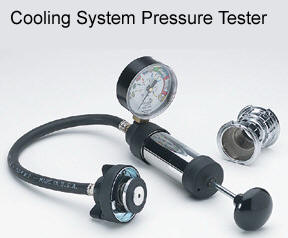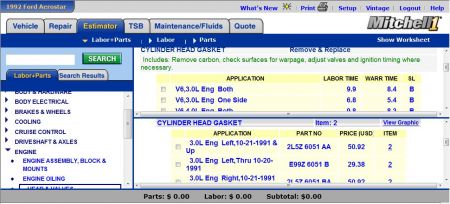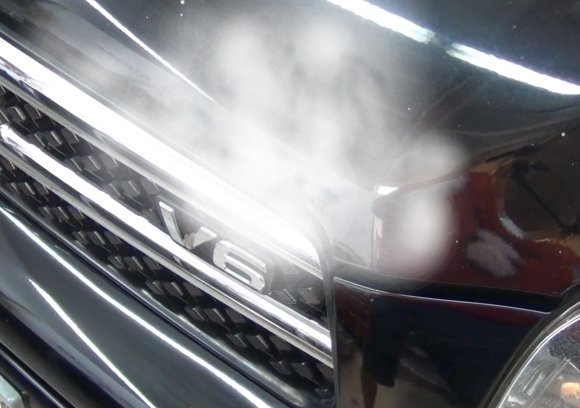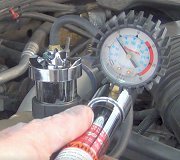CYLINDER HEAD
Removal
Remove upper and lower intake manifolds. See, in this article, INTAKE MANIFOLDS under REMOVAL & INSTALLATION. Remove accessory drive belts and idler. When removing left cylinder head, remove power steering pump bracket retaining bolts. Remove power steering pump and bracket as an assembly (with hoses attached).
On Aerostar, remove ignition coil bracket and coil. On all models, remove dipstick tube retaining nut from exhaust manifold. Rotate or remove dipstick tube. When removing right cylinder head, remove alternator bracket and adjusting arm.
Remove spark plugs. Remove exhaust manifolds. See, in this article, EXHAUST MANIFOLDS. Remove PCV valve and valve covers. See VALVE COVERS.
Loosen rocker arm bolts and move rocker arm off push rod. Keep push rods in order for installation reference, and remove push rods. Remove and discard cylinder head retaining bolts. Remove cylinder head and gasket.
INTAKE MANIFOLDS
NOTE:Upper and lower intake manifold service procedures are covered separately.
Removal (Upper)
Disconnect negative battery cable. Remove air cleaner duct hose. Remove throttle linkage shield and disconnect linkage. Mark and disconnect vacuum hoses from throttle body. Mark and disconnect electrical connectors.
Disconnect PCV hose. Remove alternator support brace. Remove 6 upper intake manifold assembly bolts. Remove upper intake manifold assembly and gasket.
Removal (Lower)
Disconnect negative battery cable. Drain cooling system. Remove air cleaner duct hose. Relieve fuel pressure. See, in this article, FUEL PRESSURE RELEASE under REMOVAL & INSTALLATION. Using Disconnect Tool (D87L-9280-A) for 3/8" line or (D87L-9280-B) for 1/2" line, disconnect fuel supply and return lines. See Fig.
Remove throttle linkage shield and disconnect linkage. Mark and disconnect vacuum hoses from throttle body. Mark and disconnect electrical connectors. Disconnect upper radiator hose from thermostat housing. Remove ignition coil from throttle body.
Remove throttle body. Remove alternator support brace. Disconnect fuel injector harness connectors. Disconnect heater hoses. Mark distributor housing location and note rotor position. Remove distributor. Remove valve covers. See VALVE COVERS.
Loosen cylinder No. 3 intake valve rocker arm. Rotate rocker arm off push rod. Remove push rod. Remove intake manifold retaining bolts. Remove alternator if necessary. Remove intake manifold.
EXHAUST MANIFOLDS
Removal
Disconnect negative battery cable. Remove spark plugs. Remove oil dipstick tube retaining nut from left cylinder head, and rotate tube off of stud. Separate exhaust pipe from exhaust manifold. Remove exhaust manifold bolts. Remove exhaust manifold.
VALVE COVERS
NOTE:Valve covers have integral (built-in) gaskets which are made to last the life of the vehicle. If necessary, replacement gaskets are available.
Removal
Disconnect negative battery cable. On Aerostar, remove fresh air hose from air cleaner. On all models, mark and remove spark plug wires from spark plugs. Remove spark plug wire separators from valve cover studs. For left valve cover, remove upper intake manifold.
Remove PCV valve. Disconnect injector wiring harness bracket from left valve cover studs. For right valve cover on Aerostar, remove oil filler tube. On Ranger, disconnect engine wiring harness connectors from right valve cover.
On all models, disconnect injector wiring harness bracket from right valve cover studs. Disconnect breather hose. On all applications, remove valve cover retaining bolts and studs.
Carefully slide a thin knife between cylinder head and valve cover. Cut silicone sealer; DO NOT cut integral gasket. Remove valve cover(s).
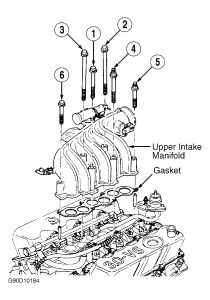
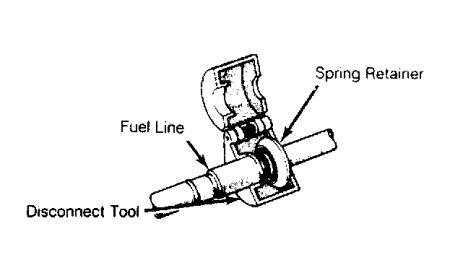
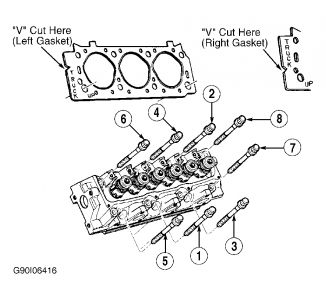
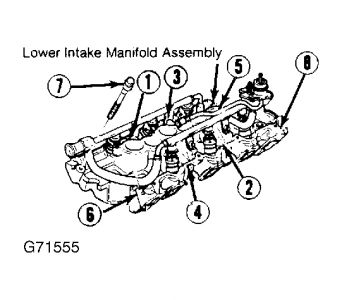
Thursday, September 16th, 2010 AT 4:49 PM
